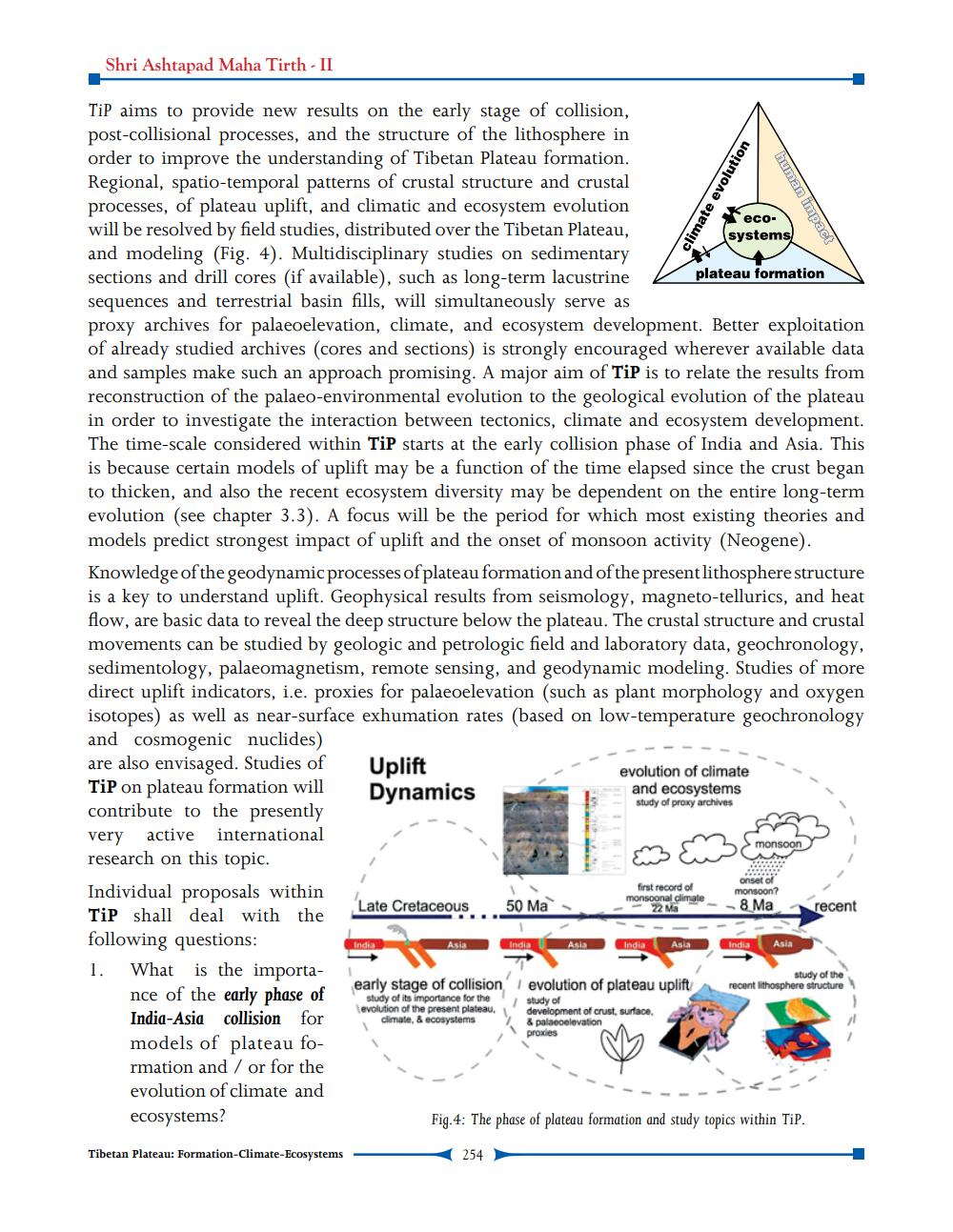________________
Shri Ashtapad Maha Tirth - II
TiP aims to provide new results on the early stage of collision, post-collisional processes, and the structure of the lithosphere in order to improve the understanding of Tibetan Plateau formation. Regional, spatio-temporal patterns of crustal structure and crustal processes, of plateau uplift, and climatic and ecosystem evolution will be resolved by field studies, distributed over the Tibetan Plateau, and modeling (Fig. 4). Multidisciplinary studies on sedimentary sections and drill cores (if available), such as long-term lacustrine sequences and terrestrial basin fills, will simultaneously serve as
Tibetan Plateau: Formation-Climate-Ecosystems
Uplift Dynamics
proxy archives for palaeoelevation, climate, and ecosystem development. Better exploitation of already studied archives (cores and sections) is strongly encouraged wherever available data and samples make such an approach promising. A major aim of TiP is to relate the results from reconstruction of the palaeo-environmental evolution to the geological evolution of the plateau in order to investigate the interaction between tectonics, climate and ecosystem development. The time-scale considered within TiP starts at the early collision phase of India and Asia. This is because certain models of uplift may be a function of the time elapsed since the crust began to thicken, and also the recent ecosystem diversity may be dependent on the entire long-term evolution (see chapter 3.3). A focus will be the period for which most existing theories and models predict strongest impact of uplift and the onset of monsoon activity (Neogene).
Late Cretaceous
Knowledge of the geodynamic processes of plateau formation and of the present lithosphere structure is a key to understand uplift. Geophysical results from seismology, magneto-tellurics, and heat flow, are basic data to reveal the deep structure below the plateau. The crustal structure and crustal movements can be studied by geologic and petrologic field and laboratory data, geochronology, sedimentology, palaeomagnetism, remote sensing, and geodynamic modeling. Studies of more direct uplift indicators, i.e. proxies for palaeoelevation (such as plant morphology and oxygen isotopes) as well as near-surface exhumation rates (based on low-temperature geochronology and cosmogenic nuclides) are also envisaged. Studies of Tip on plateau formation will contribute to the presently very active international research on this topic. Individual proposals within Tip shall deal with the following questions: 1. What is the importance of the early phase of India-Asia collision for models of plateau formation and/or for the evolution of climate and ecosystems?
India
Asia
50 Ma
India
254
Asia
climate evolution
first record of monsoonal climate 22 Ma
India
evolution of climate and ecosystems study of proxy archives
Asia
early stage of collision, evolution of plateau uplift study of its importance for the study of Levolution of the present plateau,
climate, & ecosystems
development of crust, surface, & palaeoelevation proxies
eco
systems
plateau formation
human impact
India
monsoon
onset monsoon? 8 Ma
Asia
Fig.4: The phase of plateau formation and study topics within TiP.
recent
study of the recent lithosphere structure




